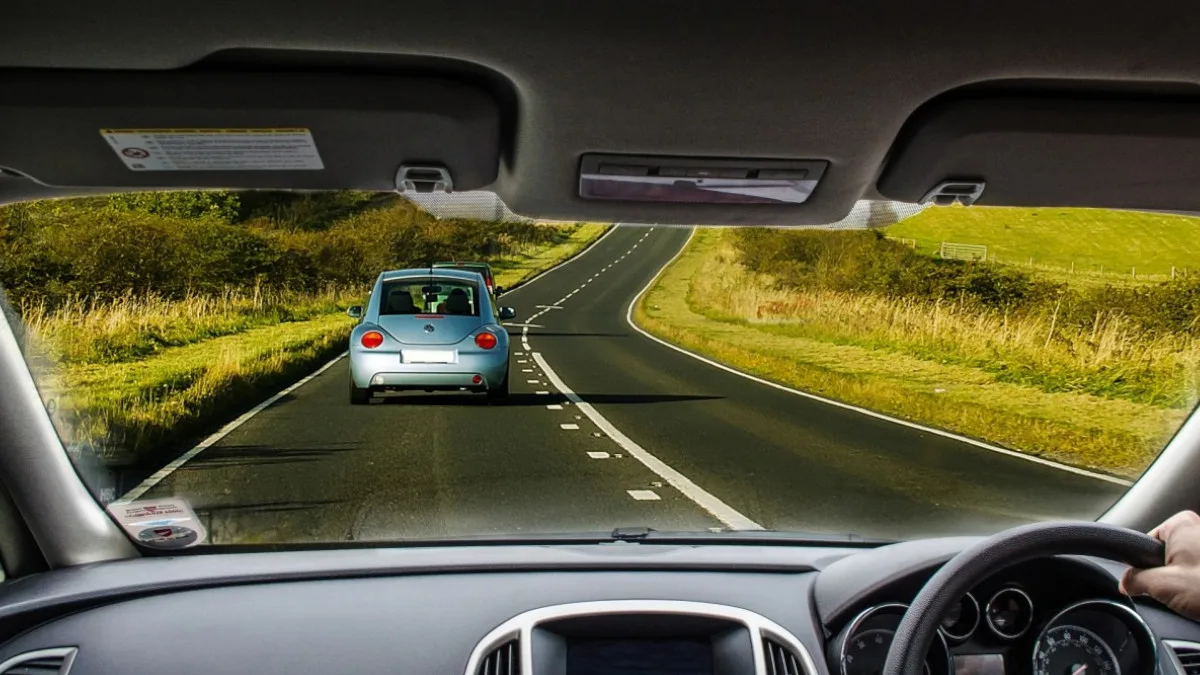Cruising down the highway, the wind in your hair (figuratively, with windows closed for safety!), it’s easy to get lulled into a sense of rhythm. But beneath the surface of a seemingly effortless drive lies a crucial element – maintaining a safe distance from the car ahead. This distance, often referred to as the following distance, is more than just empty space; it’s a buffer zone that ensures you have enough time to react to unforeseen situations. But how close is too close? Buckle up, as we delve into the details of the ideal driving distance on the road, incorporating the latest insights for a confident and safe journey.
The Science of Stopping: Why Distance Matters
Imagine a scenario – you’re approaching a red light, the car in front brakes suddenly. Without a safe following distance, you risk a rear-end collision. This is where reaction time comes in. The time it takes you to perceive danger, process it, and take action (like hitting the brakes) is crucial. Adding to this is the braking distance – the space your car travels while the brakes are applied until it comes to a complete stop. Here’s where physics plays its part – higher speeds translate to longer braking distances. So, the ideal driving distance factors in both your reaction time and braking distance, ensuring you have enough space to come to a safe stop in case of emergencies.
The 3-Second Rule: A Timeless for Safe Driving
A widely recognized guideline, the 3-second rule simplifies the concept of maintaining a safe following distance. It suggests leaving at least 3 seconds of space between your car and the vehicle ahead. Here’s how to implement it:
- Pick a fixed object: Identify a stationary landmark on the road, like a signpost or a lane marker.
- The car in front crosses the point: As the car ahead passes the chosen landmark, start counting.
- Maintain the 3-second gap: Aim to reach the same landmark at least 3 seconds after the car in front.
Beyond the Basics: Tailoring the Distance for Optimal Safety
While the 3-second rule is a solid foundation, consider these factors to further refine your safe following distance:
- Weather conditions: Rain, snow, fog, or icy roads significantly increase stopping distances. Increase the following distance to compensate for reduced traction.
- Visibility: Limited visibility due to darkness, heavy rain, or winding roads necessitates a greater buffer zone.
- Vehicle condition: Faulty brakes or worn tires can extend braking distances. Get regular car maintenance to ensure optimal performance.
- Traffic flow: In stop-and-go traffic, a shorter following distance (with caution) might be necessary. However, maintain a heightened sense of awareness.
- Driving experience: Newer drivers might benefit from a slightly larger following distance until they develop a strong sense of reaction time and spatial awareness.
Advanced Techniques: Embracing Modern Safety Features
Modern vehicles are increasingly equipped with technology that assists with maintaining a safe distance:
- Forward Collision Warning (FCW): This system alerts you if you’re approaching a vehicle too quickly.
- Automatic Emergency Braking (AEB): In some scenarios, AEB can automatically apply brakes to prevent a collision.
Remember, these features are not replacements for safe driving practices. Use them as enhancements to your driving skills.
The Art of Safe Following: Beyond Distance
Maintaining a safe following distance goes beyond just the number of seconds or car lengths. Here are some additional tips:
- Avoid distractions: Texting, eating, or fiddling with the radio can significantly hinder your reaction time.
- Stay alert: Scan the road ahead, anticipating potential hazards and traffic flow changes.
- Maintain a smooth ride: Avoid erratic braking or acceleration, keeping the flow of traffic predictable.
- Leave enough space for merging vehicles: Be courteous and allow merging vehicles ample space to enter your lane safely.
Conclusion: Mastering the Art of Distance for a Safe Journey
By understanding the science behind stopping distances, employing the 3-second rule with adjustments for various situations, and staying focused on the road, you can master the art of maintaining a safe following distance. Remember, a few extra seconds on the road are far better than the consequences of a preventable accident. So, buckle up, embrace a safety-first mindset, and enjoy the ride!
Discover more from Wheels Craze - Automotive News, EV News, Car News, Bike News
Subscribe to get the latest posts sent to your email.



